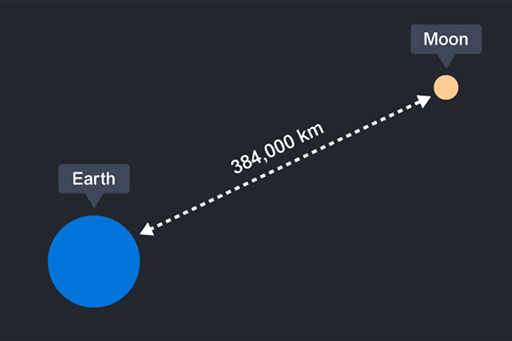1.3 The Moon – some facts
The Moon is about 4.5 billion years old. Current thought is that it was most likely formed by a giant impact, as you saw in Week 1.
The distance to the Moon is known accurately due to reflectors that were placed on it during the Apollo missions. The reflectors, part of the Lunar Laser Ranging Experiment, allow lasers to be shone onto the Moon and the time taken for the laser light to get there and back can be measured. It is then possible, using a simple equation, to calculate the distance to the Moon. You can watch a four minute video of Brian Cox explaining just this [Tip: hold Ctrl and click a link to open it in a new tab. (Hide tip)] .
Next, you have a chance to try calculating the distance to the Moon for yourself. It’s a very basic non-scored quiz. Don’t worry if you don’t know some of the answers.
Activity 1 Calculating the distance to the Moon
a.
distance = (time/speed)/2
b.
distance = (speed × time)/2
c.
distance = (speed/time)/2
The correct answer is b.
b.
This is correct because speed = distance/time. Multiplying both sides by time gives: distance = speed × time. Then speed × time is divided by 2 because the time obtained by shining the laser is the time for the light to go to the Moon and back to Earth, whereas all you want to know is the time for the light to reach the Moon.
a.
The speed of light
b.
The speed of sound
c.
It is different depending on the laser
The correct answer is a.
a.
This is correct. Since a laser is simply a light source so laser light travels at the speed of light, independent of the frequency of the laser.
a.
~770 000 km
b.
~260 000 km
c.
~390 000 km
The correct answer is c.
c.
This is correct. The speed of light is approximately 3 × 108 m s−1 and the time taken for the light to go to and from the Moon is about 2.6 seconds. Using the equation given above, distance = (speed × time)/2, you get distance to the Moon ~390 000 km.

